A Journey Through The Luminous Charm of Prague
By: Ondřej Pokorný
Photo: Magdalena Vojteková
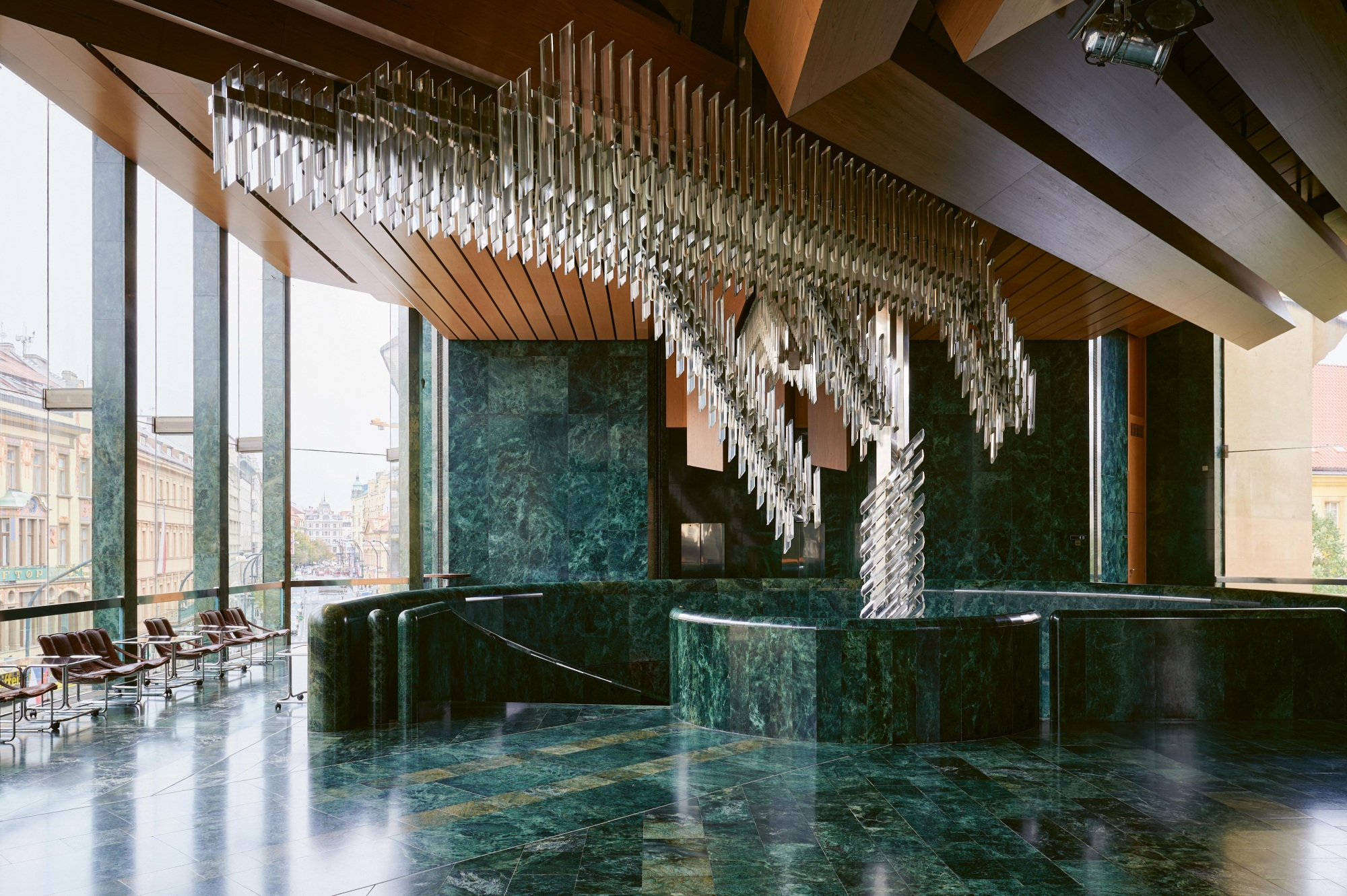
New Stage (1983)
Authors: Pavel Hlava, Jaroslav Štursa, Location: Národní 1393/4
A Brutalist gem in the heart of the city. From the busy street, the New Stage resembles a spaceship. Inside, however, the building plays with all the senses of its visitors. The staircase lined with polished marble from Cuba boasts a glass sculpture, Tree of Life, by Pavel Hlava and Jaroslav Štursa. Around the stunning chandelier spectators dressed in their evening best climb the path from the box office to the café, to the cloakroom and on to the theater hall.
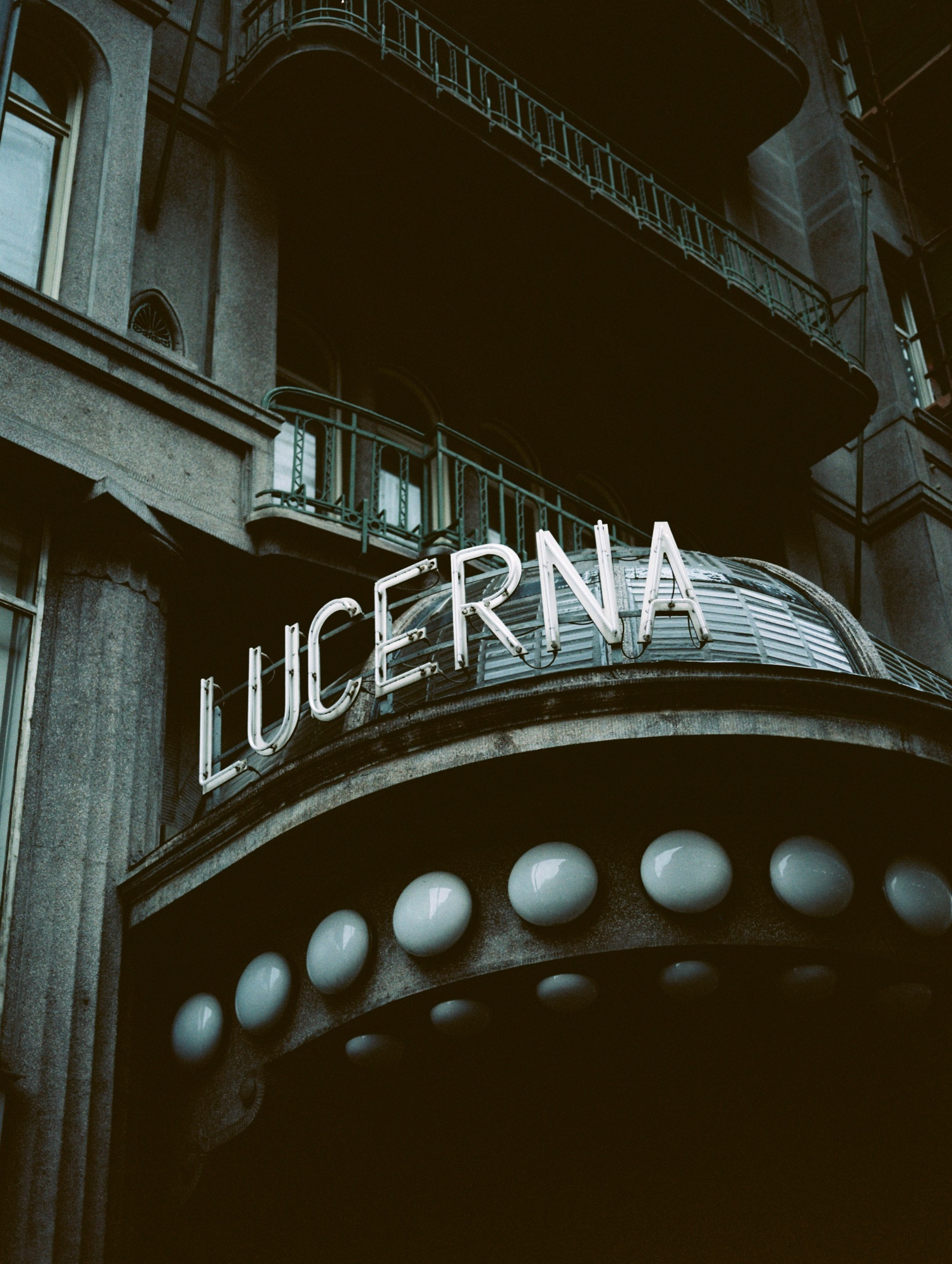
Lucerna Palace (1921)
Author: Stanislav Bechyně, Location: Vodičkova 704/36
When the developer brought the completed project and showed the design of the facade to his wife, the palace reminded her of a large lantern. And that is how the iconic building near Wenceslas Square, interwoven with passages, got its name. Lucerna, a beautiful Czech word, but one that is easy to pronounce even for a foreigner. If you look carefully, you will notice the lantern symbols in several places around the palace. The Lucerna sign is one of the last originally shaped neon signs in the center of Prague.

Edison Substation (1930)
Author: Zdeněk Pešánek, Location: Na Hroudě 1492/4
A pioneer of kinetic art in public space worldwide, Zdeněk Pešánek loved experiments and pushing boundaries. He marked the arrival of modernity on the facade of the Edison Electrical Substation. Although the unique sculpture did not survive the historical upheavals, a half-size replica was fortunately created in the 1990s which makes a showpiece on the facade of the HQ of the energy supplier – and the model is now in the collection of the National Gallery.
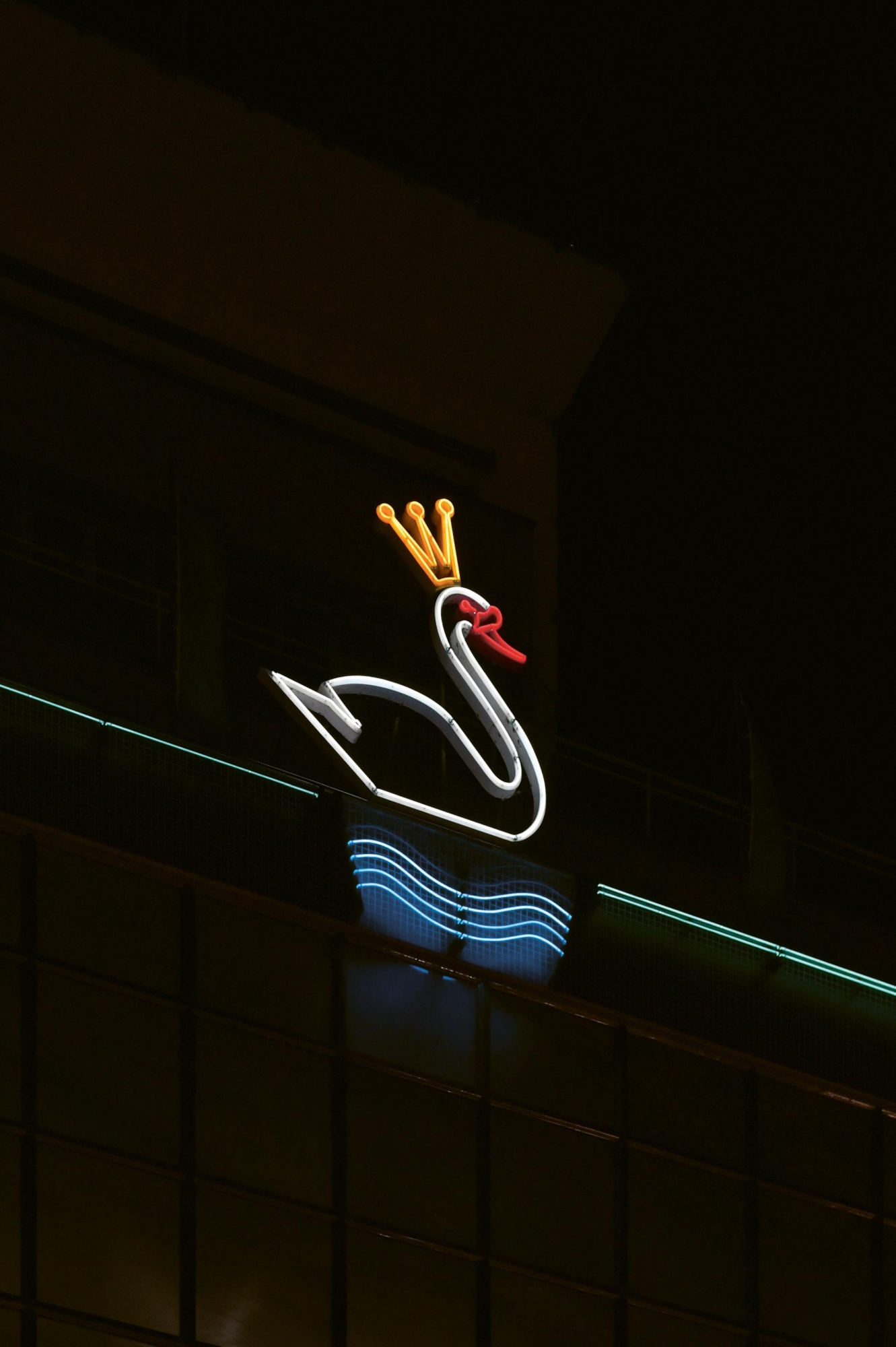
Bílá Labuť Store (1939)
Author: Božidar Leiser, Location: Na Poříčí 1068/23
Perhaps the most famous neon sign in the city, it has been keeping an eye on Prague for more than 80 years. The eight-meter white swan proudly hovers above the roof of of the Functionalist department store of the same name – Bílá Labut’ in Czech. The revolving symbol was designed by graphic designer Božidar Leiser for Brouk and Babka’s flagship store. The owners of the company wanted to match the most modern department stores in Europe at the time. And they succeeded.
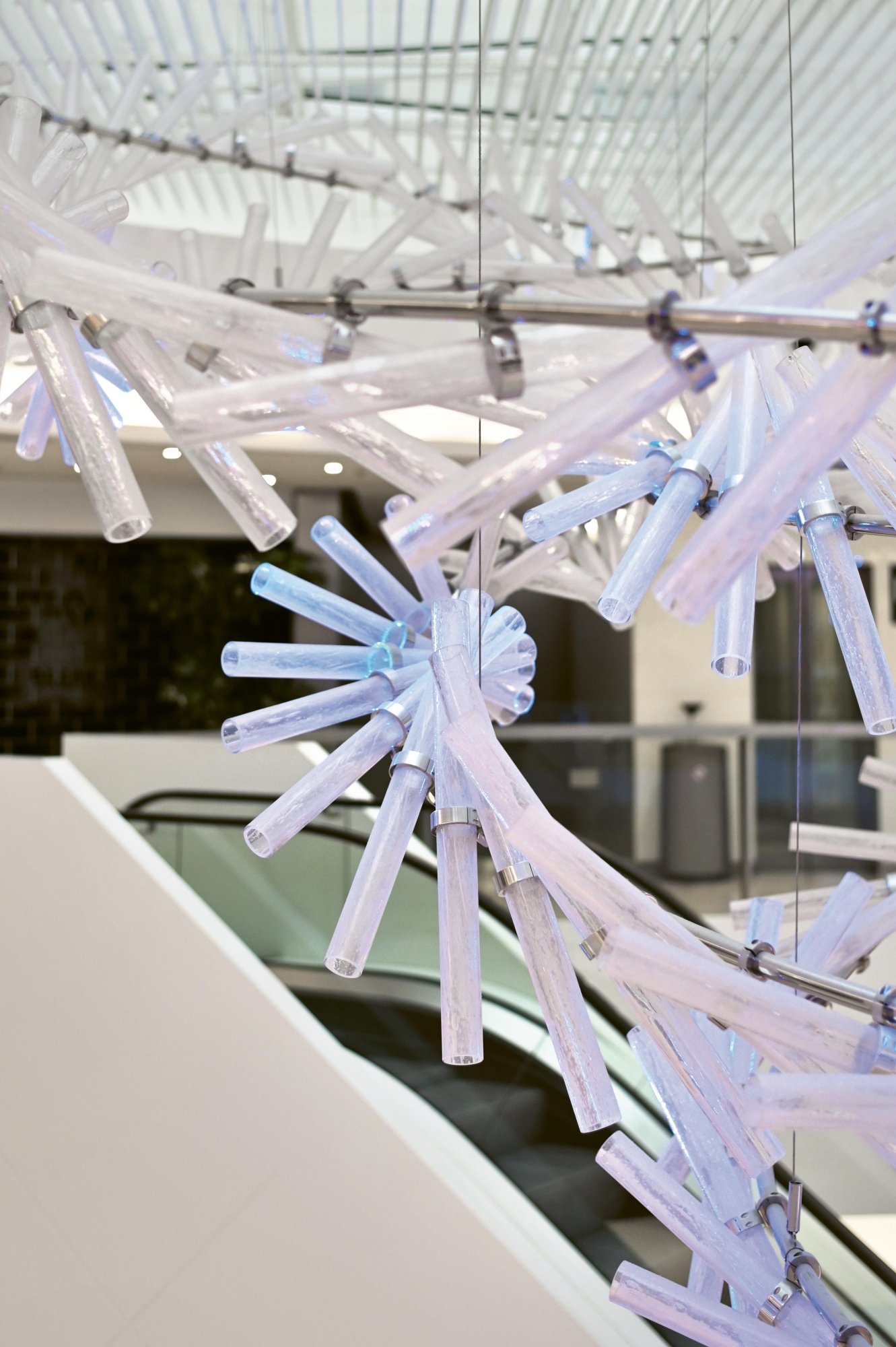
Myslbek Arcade (2016)
Authors: Maxim Velčovský, David Chisholm, Vít Máslo for Lasvit, Location: Na Příkopě 1096/19
Perhaps the most famous neon sign in the city, it has been keeping an eye on Prague for more than 80 years. The eight-meter white swan proudly hovers above the roof of of the Functionalist department store of the same name – Bílá Labut’ in Czech. The revolving symbol was designed by graphic designer Božidar Leiser for Brouk and Babka’s flagship store. The owners of the company wanted to match the most modern department stores in Europe at the time. And they succeeded.
Aria Hotel (2017)
Author: Luděk Hroch for Lasvit, Location: Tržiště 368/9
Hand-shaped glass leaves that resemble dancing in the void. Suspended from the glass ceiling in the Aria Hotel lobby, Dancing Leaves will never touch the ground. A light installation by Luděk Hroch in the Lesser Town, a district of palaces, ministries and embassies, with a secret entrance to the beautiful Vrtbovská Garden, where locals like to take a break from the hustle and bustle of the metropolis.

Hus Congregation (1930)
Authors: Karel Truksa, Pavel Janák, Location: Vršovické náměstí 967/1
If you’re lucky, you’ll see a lighthouse shining at night over Vršovice, a dynamically developing district in the wider center of Prague. It’s not just any signal, it’s meant to guide the faithful to a safe harbor. The 26-meter-tall tower of the Hus Congregation, a prayer house of the Czechoslovak Hussite Church, features a chalice with a cross at its peak. The building was designed more than 90 years ago by architect Karel Truksa together with his teacher Pavel Janák.
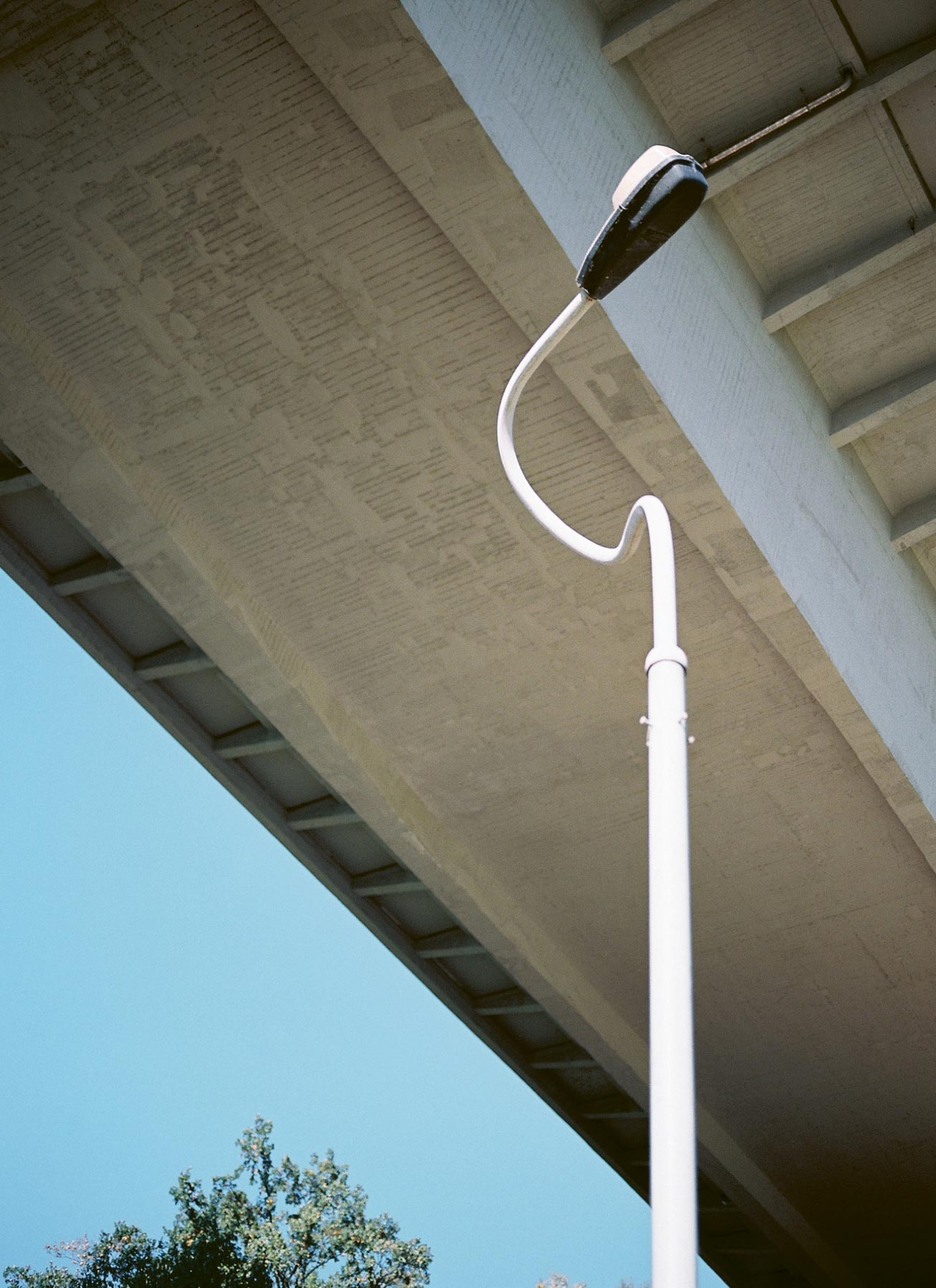
Folimanka Park (2011)
Author: Krištof Kintera, Location: Folimanka park
The majestic Nusle Bridge from 1973 has fundamentally changed the transport in the city and has unfortunately witnessed many personal tragedies. No one knows the exact number, but estimates hover around 300 people who chose to end their lives by jumping off the bridge. Krištof Kintera honors their voluntary departure with a delicate memorial called By Their Own Choice – Memento Mori. A common street lamp for some. But others know that the light facing upwards towards the bridge carries a powerful symbolism.
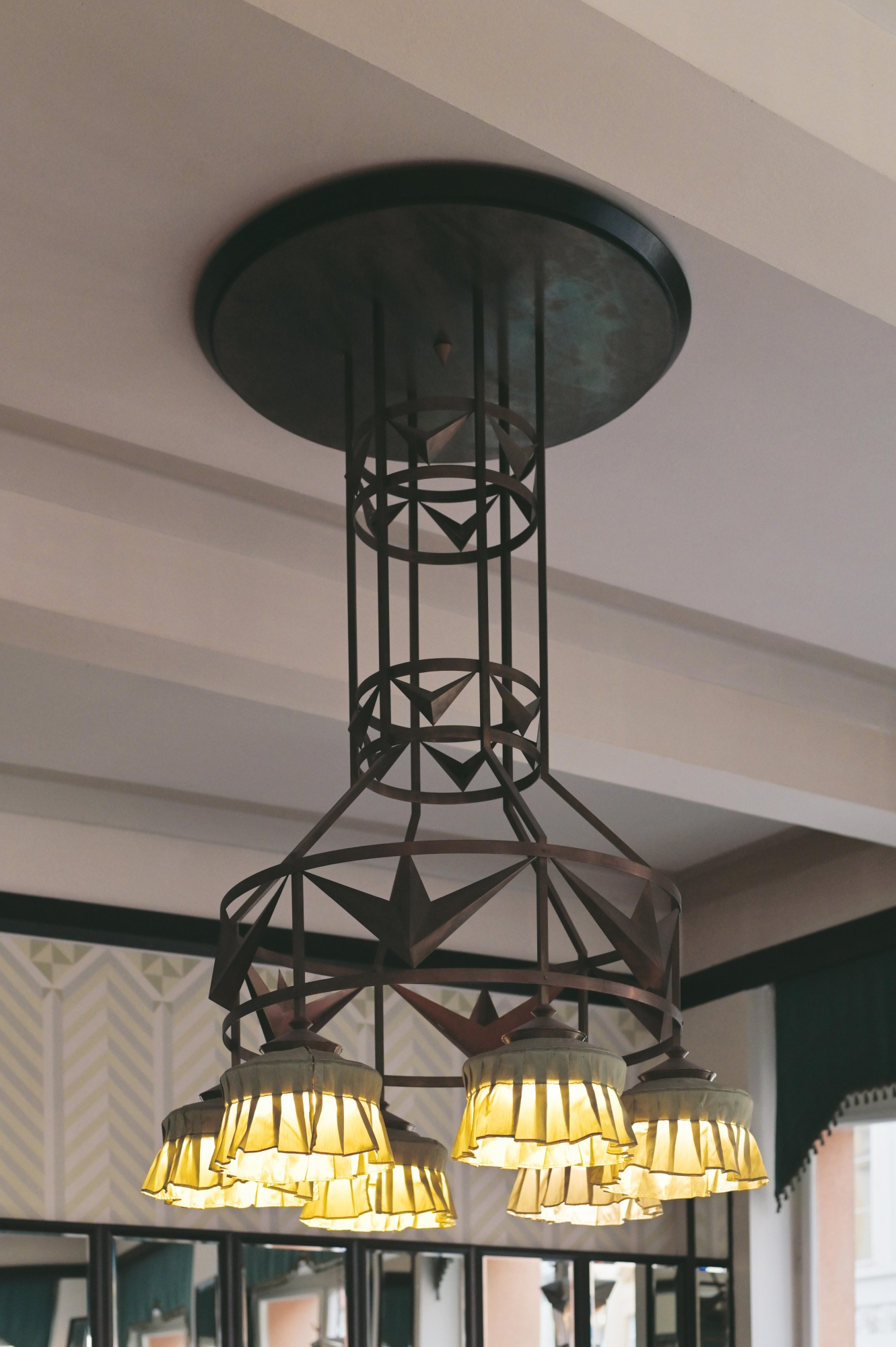
Grand Café Orient (1912)
Author: Josef Gočár, Location: Ovocný trh 569/19
Cubist architecture, the legacy that Prague left to the world. Perhaps the most famous building is the House of the Black Madonna by Josef Gočár. You can find it at the beginning of the Royal Route, where the monarchs travelled to Prague Castle. It is worth stopping and going up to the first floor. The Grand Café Orient awaits you there with delicious desserts and unusual Cubist chandeliers. You will feel there like in the old times when Bohemia still had a king.

Cubist Lamp (1912)
Author: Emil Králíček, Location: Vodičkova 704/36
Prague is a mix of styles, a layer covered with five other layers. You will realize this, for example, in an almost inconspicuous corner just off Wenceslas Square. The architect Emil Králíček placed the Cubist Lamp here next to a Gothic portal to a monastery and a Neo-Baroque house. Apparently, it is the only Cubist lamp in the world. Sit back, enjoy, and then move a few meters towards the river – for a draft beer with rich foam at the U Pinkasů pub.
Google

